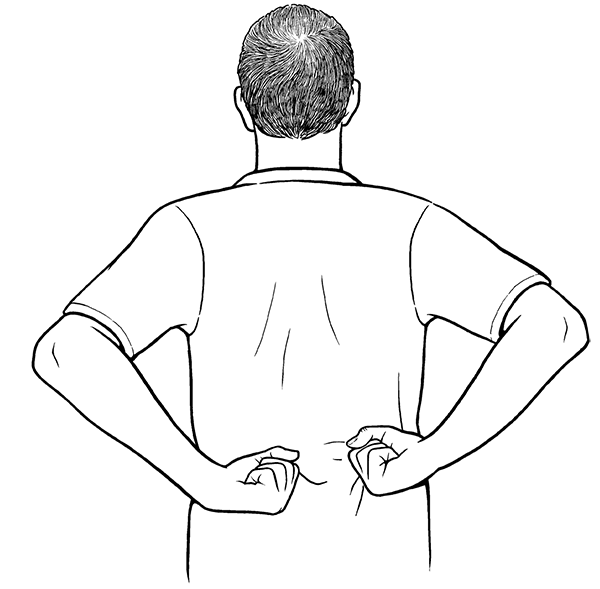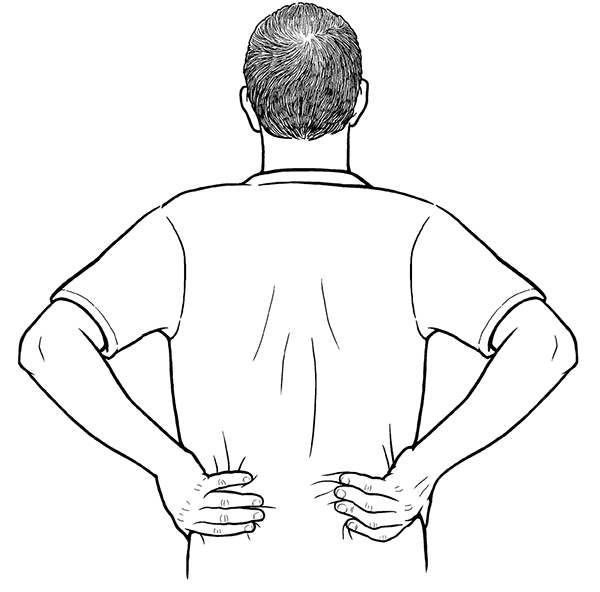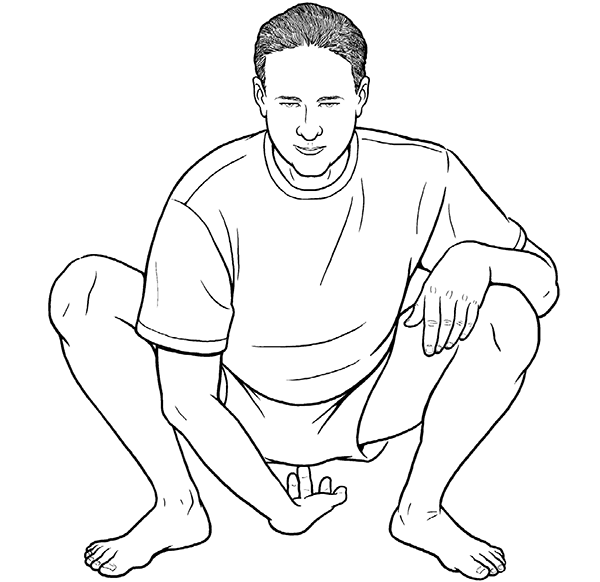Chinese Healing Exercises (27 page)
Read Chinese Healing Exercises Online
Authors: Steven Cardoza
Tags: #Taiji, #Qi Gong, #Daoist yoga, #Chinese Healing, #Health, #medicine, #remedy, #energy

4. Thymus Tap
The thymus is a gland composed of lymphatic tissue, located in the upper central chest, behind the sternum (breastbone), midway between top of the heart and the sternal notch at the base of the throat. It is most active in youth, enlarging until puberty, at which time it begins to shrink. In recent years, it has come to be recognized as still important through adulthood. The thymus forms part of the immune system, transforming lymphocytes (white blood cells that develop in the bone marrow), into T-cells. These cells are then transported to various lymph glands, where they play an important role in fighting infections and disease. The thymus also produces hormones that regulate T-cell maturation. The Thymus Tap stimulates this gland, helping to keep it functionally active throughout later adult years.
Make a soft fist with either hand, and thump your upper chest on your breastbone, below your throat notch and above your heart. Vary the rhythm and speed, and within comfortable limits, even the strength of the thump. The body tends to adapt to any repetitive stimulus, eventually “ignoring” it. Varying the rate, rhythm, and strength makes this unlikely. Do this for just a minute or two each day.
5. Kidney/Adrenal Tap
The adrenals are a pair of triangular glands about one to two inches long, that sit on each of the kidneys in the low back. They secrete more than three dozen hormones directly into the bloodstream. The outer region takes its instructions from the pituitary hormone ACTH, and secretes steroid hormones such as cortisone and testosterone, which have important effects on the way energy is stored and utilized, on sexuality, and on many aspects of blood chemistry. The smaller, inner region is part of the sympathetic nervous system and responds to physical and emotional stress. Reacting to fear, anger, or perceived emergency, it produces epinephrine and norepinephrine (adrenaline and noradrenaline), which are sometimes called “fight or flight” hormones.
The kidneys are bean-shaped organs about the size of a fist, located in the lower back on each side of the vertebrae. They filter toxins from the blood and excrete them as urine. They also filter out normal substances from the blood when they are present in greater than normal concentrations, as a means of maintaining homeostasis. The kidney is an endocrine gland itself, secreting the hormones erythropoietin, involved in the formation of red blood cells, and calcitriol, the active form of vitamin D.
The kidneys are commonly damaged by diabetes and high blood pressure, two diseases that are very prevalent in modern cultures. While this exercise won't repair existing damage, it can help to prevent it from occurring, as well as support kidney and adrenal health overall.
 Figure 9.4 (Kidney/Adrenal Tap)
Figure 9.4 (Kidney/Adrenal Tap)
This paidagong can be done standing, but may be more comfortable when practiced sitting, on the floor or on a chair or stool. Make soft fists with both hands, and with either the thumb and index finger sides of the fists
(
Fig 9.4
),
or the backs of the fists
(
Fig 9.5
on next page
),
tap your low back, from your lowest rib to just above your pelvis. Many people have low back tension, discomfort, or pain, and this tap can be surprisingly soothing. A hundred taps on each kidney will only take about a minute, and is the recommended daily minimum for this practice. You can do this for a few minutes longer if you like. The kidneys are sensitive organs, so while you do want to vary the rate and rhythm of the taps, take care not to tap too hard.
 Figure 9.5 (Kidney/Adrenal Tap)
Figure 9.5 (Kidney/Adrenal Tap)
6. Kidney Massage
In all aspects of Chinese medicine, it's standard practice to first dispel any pathogenic influence, and then bring in healthy qi to rebuild, repair, or restore normal function to the affected organ/meridian system(s). The Kidney/Adrenal Tap above disperses stagnant qi, and under most circumstances should be practiced before the Kidney Massage. The Kidney Massage is soothing, nourishing, and warming; settles the qi that was stirred up by the paidagong and gathers healthy qi to tonify and replenish the kidneys.
In Chinese medicine, the kidneys are known to affect health and life in general broadly, with a much more complex array of interrelationships than is understood by Western medicine. To name a few, this includes childhood growth and development, sexual/reproductive health and vitalityâthe testes are in fact commonly called “the external kidneys”âbone density, tooth health (as an extension of bone health), head hair, longevity/healthy aging, auditory acuity, and memory and concentration, as well as their Western roles in fluid metabolism and the excretion of waste. Maintaining kidney health is one of the primary keys to a long and healthy life.
 Figure 9.6 (Kidney Massage)
Figure 9.6 (Kidney Massage)
The Kidney Massage can be done in one of two ways. If possible, it's best to use the palms of your hands directly on your kidneys. Done this way, first rub your hands together for a minute or two to warm them, bringing more qi and blood there. Next, place your hands on your low back, your right hand over your right kidney, and your left hand over your left kidney
(
Fig 9.6
on previous page
).
Massage in small circles for a minute or two in one direction, and then reverse direction for the same amount of time. Do your best to engage the muscles below the skin, so that the muscles move and you're not just sliding your hands over your skin. Feel for the warmth of your hands penetrating all the way into your kidneys. There is no maximum time limit for this practice, so you can continue it beyond a few minutes if you'd like.
Some people have very tight shoulders and are unable to place their palms directly on their low back. In that case, this method is a good alternative option that should be possible for almost anyone. Make soft fists with your thumbs curled around your fingers. Place the sides of your fists at your low back, so that the web region between thumb and index fingers are touching your back above each kidney. You can make circles in the manner described above, or you can simply move your fists up and down. Again, try to use enough pressure so that you move the back muscles under the skin, and not just the skin itself. With practice over time, you may feel the kidneys move with the movement of your hands.
7. For Men OnlyâProstate Massage
There are many Daoist and other Chinese practices designed to enhance sexual performance. This practice is not one of those, but rather is specifically to promote a man's general and sexual health. Good health is the necessary foundation for better performance in any activity, though, so you may notice some improvements in your sexual performance as your prostate become healthier.
The prostate is a walnut-sized gland located between the bladder and the penis, just in front of the rectum. The urethra runs through the center of the prostate, from the bladder to the penis, letting urine flow out of the body. Along with the adjacent seminal vesicles, the prostate secretes a slightly alkaline fluid that nourishes and protects sperm. During ejaculation, it squeezes this fluid into the urethra, and it's expelled with sperm as semen. The alkalinity of semen helps neutralize the acidity of the vaginal tract, prolonging the sperm's lifespan.
While some men may be embarrassed by or psychologically uncomfortable with this exercise, the Prostate Massage is very important for men's sexual and general health. Regardless of the amount of sexual activity one has, the prostate gland frequently becomes enlarged as men age, congesting with blood, prostatic fluid and other body fluids. This sets the stage for BPH, benign prostatic hyperplasia/hypertrophy, a non-cancerous enlargement of the prostate gland, which can cause discomfort, burning urination, reduced and/or urgent urinary flow, frequent nighttime urination, and an increased possibility of urinary tract infections, among other things. Although there is no definitive Western medical link between BPH and prostate cancer, from a Chinese medical perspective, the factors that cause BPH and the secondary obstruction of the enlarged prostate itself can set the stage for prostate cancer. Prostate massage can prevent or reverse some of those underlying factors, and promote prostate health in any case.
The mechanics of the Prostate Massage will be familiar to most men, since it is nearly identical to the DRE (digital rectal exam) their physician gives to examine the prostate in a typical prostate exam. The main differences are in body position, since this is something you will be doing to yourself and your position needs to accommodate that, and the amount of force used on the prostate itself. Many doctors jab or poke at the prostate during a DRE, which can be very unpleasant and even painful. While most men may never actually enjoy a prostate massage, it does not have to be, and should not be, a physically uncomfortable experience.
Before you begin you may want to get latex gloves, which are easy to find at any drugstore, and a lubricant. You can use a water-soluble lubricant like K-Y Jelly, or any natural oil lubricant like olive oil. If your knees are weak or achy, or if you are generally not very flexible, you should do this sitting on a toilet seat. If you are flexible and can squat with no problem, doing this squatting will make it a little easier to insert your finger and access your prostate.
 Figure 9.7 (For Men OnlyâProstate Massage)
Figure 9.7 (For Men OnlyâProstate Massage)
Put the latex glove on whichever hand you prefer. Apply some lubricant to your middle finger. Your middle finger is longest, and should have no difficulty reaching your prostate. Once you have some experience with this, you can use your index finger if you prefer. Then, either sit on the toilet seat or squat. Reach between your legs, behind your scrotum, and slowly and carefully insert your lubricated finger into your rectum, as far as you can
(
Fig 9.7
).
The pad of your inserted finger will be facing the front of your body. Press forward and slightly upward, toward the base of your penis. Feel for a walnut-sized protrusion or bump just inside the muscle wall. That's your prostate gland. If you've ever had a prostate exam, this should feel familiar. A healthy prostate is firm yet springy, without being hard, similar to a flexed biceps muscle. It should not hurt to press into it. Apply firm steady pressure, that is, don't jab or poke, and press into every part of the surface of the prostate you can feel. As you press into your prostate, it's common to express some prostatic fluid from your penis. As in massage done anywhere on the body, this brings more healthy blood and nutrients into the prostate and surrounding muscle, helps to remove toxic accumulation within the prostatic tissue, and expresses prostatic fluid.